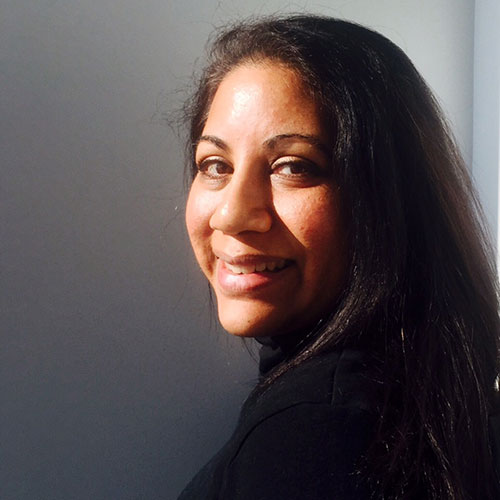SlamBall Bounces Back, Stronger Than Ever
Diehard fans just couldn't get enough
Fans demanded SlamBall. And thanks to its creators and ESPN, they’ve got it.
The sport mixes basketball, football and gymnastics, with four trampolines on each side of the court. Twenty-three years ago, Mason Gordon, then a TV production assistant, sketched the concept on a napkin and sold his boss, producer/director Mike Tollin, on SlamBall’s viability. Subsequently, the sport had a successful run in the 2000s on venues like Spike TV, Cartoon Network and CBS.
Though it’s been off the cultural radar for more than a decade, momentum for a return began a few years back, with rallying cries across social media. A single fan-posted clip garnered several million views, spurring Gordon and Tollin to attempt a revival.
As summer began, their league inked a 2-year deal with ESPN for 30-plus hours of tournament programming from Las Vegas. The SlamBall playoffs and championship game are slated for Aug. 17-19.
Plans for the sport are far-reaching. There’s already live betting and merchandise, plus talk of building courts in gyms and recreation centers to make it accessible and affordable.
Tollin, co-chairman of Mandalay Sports Media, spoke with Muse about the hybrid competition’s return to the limelight.
MUSE: How does it feel to bring SlamBall back?
Mike Tollin: We never felt like it was over, we felt like it might have been dormant. But it was never dead. It was just waiting for the next opportunity. There was always this feeling that maybe we were ahead of our time, and when the pandemic happened, suddenly this hashtag #BringBackSlamBall appeared and got millions of views without us doing anything. It just organically spread. That was a wake-up call for us. And we started taking the steps which ultimately brought us to Las Vegas.
Can you elaborate on how social media is a big part of the marketing equation?
We curate the top 10 highlights from all the games and put them on platforms like Instagram and TikTok. And ESPN showcases them on their YouTube channels and website, and occasionally on-air. Many influencers have come to the SlamBall courts and had a great time on the trampolines and posted about their experiences. We also have a very clever social media director, Bailey Carlin.
How is this iteration different from a marketing perspective?
When we were on Spike TV, SlamBall was touted more as a kind of a human videogame. Viewers may not have been aware of the rules, but the fun factor was watching these high-flying, acrobatic, athletic young men doing seemingly impossible feats. It was really a TV show, packaged and polished, perhaps in the realm of American Ninja Warrior or American Gladiators. So it was general entertainment. Now, in the marketing that surrounds the current effort, we are clear that this is an authentic, legitimate sport.
Can you talk about the previous generation serving as a main selling point for the sport today?
When we announced that we would officially be back, there was this outpouring of support from players, coaches and administrators, and all the kinds of folks that we’d have to round up to mount this. Snoop Dogg, Pat McAfee and Pat Mahomes have all talked about how glad they are that SlamBall is back. Some of the best players from the previous generation are now coaching: Stan “Shakes” Fletcher and Jelani Janeice are arguably the two best players. They’re both head coaches now. Coach Carter, who was played by Samuel L. Jackson [in the film of the same name], is back. There’s also Trevor Anderson, who was a player and is now a coach of the Ozone. His first draft choice was his son. It’s also really cool to see a father and son team. A lot of people see SlamBall as their life.
To a certain extent, the stakes are higher, and the challenge is greater. But, there’s so many people who are incredibly passionate about it and determined to see this through.
How did the ESPN deal come about?
The reach and the profile of the media partners can be a big part of sending the right message. Between Mason, myself and Tom Penn, who is a third partner that we brought along, we have good relationships with a lot of the primary broadcast, cable and streaming platforms, and we just started reaching out. Ultimately, it became a very competitive endeavor. To have ESPN as our broadcast partner speaks a lot to how we’re going to message this sport.
What do you foresee for SlamBall’s future geographically, but also for the league, and the sport overall?
We’ve had a lot of interest from a variety of places, some in the U.S. and some international, like Australia, India and Turkey. China still has SlamBall courts and I think they’d love to revive it. We’d like to do four events a year, similar to the Grand Slam format that we’ve seen in tennis and golf.
One thing that’s clearly going to happen because of the growing profile of the sport is [an increase in] the athleticism of the players and the quality of play, which I believe is going to grow dramatically. That’s exciting. We intentionally did not go after celebrities. We wanted to create our own stars. And we’re going to stick to that, although it wouldn’t shock me if somebody made a compelling enough bid to be the first ex-NBA player or ex-NFL player in SlamBall. We’re having conversations about a women’s SlamBall league. We’re just going to keep going in the right direction.






